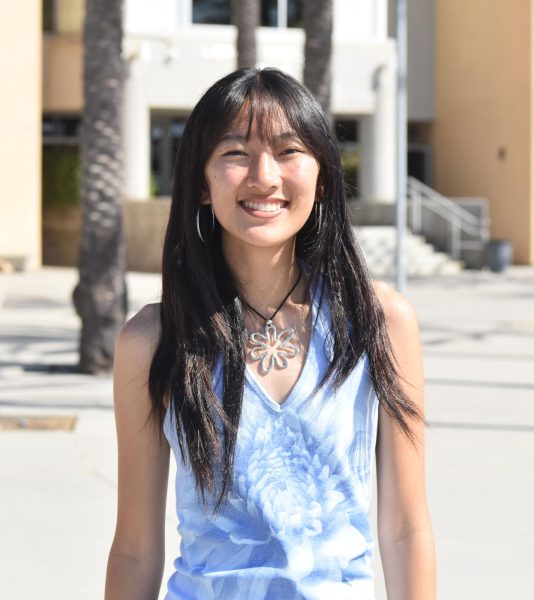Statewide, math educators of all different levels, from elementary to collegiate, have spent the last four years developing and debating the revisions that should be done to the math framework for K-12 schools. As a result, the new California Math Framework (CMF) was approved by the California State Board of Education and published, July 12.
With 1,000 pages outlining math standards for K-12 schools, regions across California have adopted changes in the focus of their curriculums. But as it stands, a 1,000-page document is argued as “one of the more transformative shifts initiated by the state’s new guidance on K-12 math instruction [that] has flown under the radar” according to EdSource, warding off public input due to its length.
As the CMF pushes a shift toward critical thinking and understanding through big concepts, it sets up the general foundation of what California math education is seeking to pioneer in the next few years.
According to math teacher Michael Nguyen, there has been a general shift toward more inquiry-based learning in integrated math curriculums, even before the approval of the new CMF, which has proved to benefit math fluency in students.
“At the beginning of my career, teaching math was very much centered around differentiated instruction,” Nguyen said. “About seven years ago, it shifted towards group learning, hence our adoption of the [College Preparatory Mathematics] curriculum. At first, I was skeptical of the change to the curriculum shift. CPM is by no means perfect, but I would say that in certain areas, math fluency has increased. For example, students from Integrated III are largely reported to be more proficient at trigonometry.”
Nguyen said newly arrived textbooks created for the Integrated II curriculum have also moved in this direction of conceptual application.
“Every classwork problem assigned in a given period in our Integrated classes involves some sort of element of discovery of the concept through the application of a real-world example,” Nguyen said. “For instance, in Integrated II, the problem involving the water balloon launch has a goal of teaching students how to write the equation of a quadratic from various perspectives.”
Since Westview already seems to be leaning toward inquiry-based learning, Nguyen said he expects there won’t be significant change in curriculums at Westview in the near future.
“There shouldn’t be that many changes based on what I am reading from the updated framework, compared to what we currently have,” he said. “It’s hard to say if there would be any problems. But with the strong emphasis on equity [in math education], I am very excited to see more students in our Academic Success classes moving ahead in math, as they know they have the support. It has been wonderful to see them pursuing the higher levels, such as Integrated III, AFA and some even AP Calculus.”
According to EdWeek, frameworks often take a long time to approve matching materials to go along with it. California’s new science framework, for example, took two years to receive matching science materials.
The new CMF more specifically outlines developments in data science and data literacy. Regardless of what might result of the new CMF, math teacher Katherine Bell said she anticipates more instruction and fleshed out standards regarding data science.
“We’ve been running data science classes without any standards,” Bell said. “That means that there’s no consistency in what students know or learn in data science. I think that [outlines in the new CMF] is in response to [the fact that] there wasn’t a level set, so it was counted as an advanced math without any control, consistency, or requirement of what students were supposed to learn.”
One case of controversy that’s been stirred by the loose standard of data science has been whether or not it should be able to replace Algebra II requirements, that of which are rolled into integrated courses here at PUSD.
EdSource ultimately reported that UC standards will prohibit data science as a replacement for Algebra II. Many math educators call for the ability of students to draw insights and conclusions from the data they collect through mathematical algorithms.
Bell said drawing a clear outline on where data structure stands as a whole can mitigate confusion and controversy among educators and students alike.
“We’ve been waiting for a couple years for the standards for data science to be developed,” she said. “This [development] needed to happen in terms of ‘what is data science,’ and I read somewhere that some of it is just data literacy, In order for it to count as a math class, they want you creating mathematical models and actually be mathematics-based instead of just literacy and being able to manipulate data.”
However, Bell worries parts of the “inquiry-based learning” outline of the framework may not work in favor of prioritizing teaching math understanding.
“They are suggesting in the framework that we should be discussing controversial topics, and I’m not sure that helps to teach my subject,” Bell said. “I think it might distract. I feel like it’s not my [place] to bring that up and then we have a discussion and somehow get back to the math of it.”
Though these concerns are shared among math educators outside just California, the new CMF is adamant in defending its principles in chapter two of the document discussing “Teaching Equity and Engagement.” According to the framework, the goal is to present “Mathematics [as] a tool that can be used to both understand and impact the world,” and that “issues of fairness and justice and to make mathematics relevant and engaging to students.” It stated that “If students do not produce an expected algorithmic response, teachers look for the assets underlying their thinking, to build on what they do understand.”
While the exact changes to come of the new CMF in classrooms have not been explicitly stated, one thing is for certain: California math education has been working toward fundamental modifications in the way math is applied and taught.
Nguyen said that the work to make math more engaging and equitable for all students is an ever-changing process that will not and should not stop transforming.
“I think it is important to never really be satisfied,” Nguyen said. “Curriculums and ways of learning are always evolving, so for us to evolve with it and see how we can best fit this into Westview would be the best outcome for all, teachers and students. Change can be hard, and at first, I was skeptical. I have, however, come to appreciate the framework we have, and I am also glad we have added our own supplemental activities to enhance the learning.”





![Jolie Baylon (12), Stella Phelan (12), Danica Reed (11), and Julianne Diaz (11) [left to right] stunt with clinic participants at halftime, Sept. 5. Sixty elementary- and middle-schoolers performed.](https://wvnexus.org/wp-content/uploads/2025/09/IMG_1948-800x1200.png)
